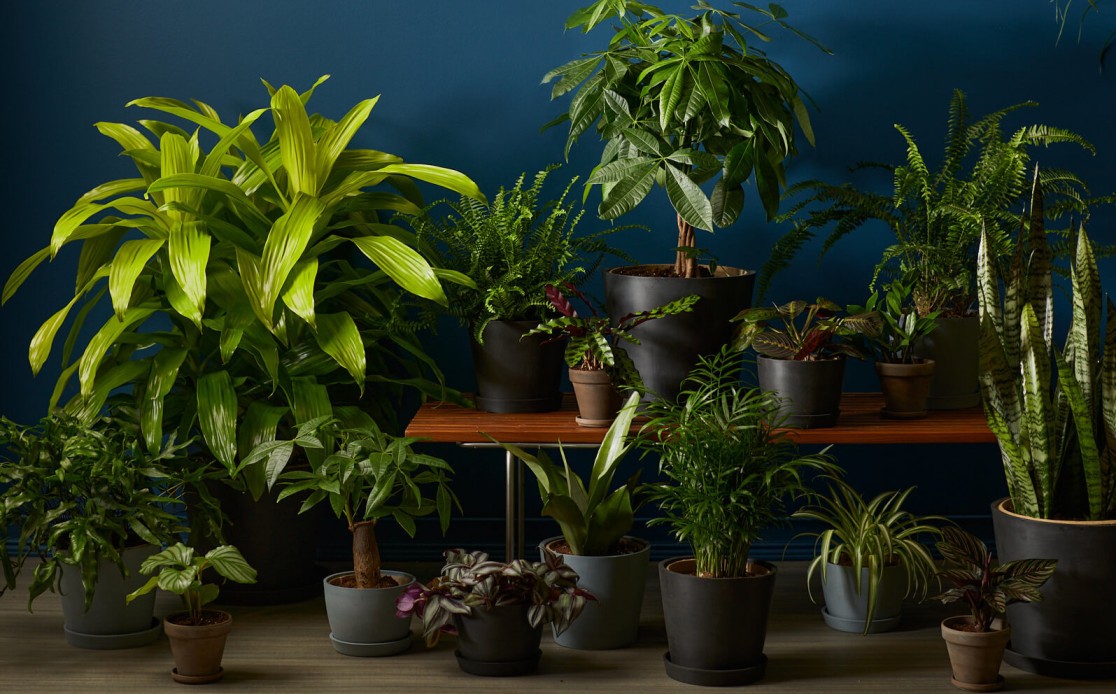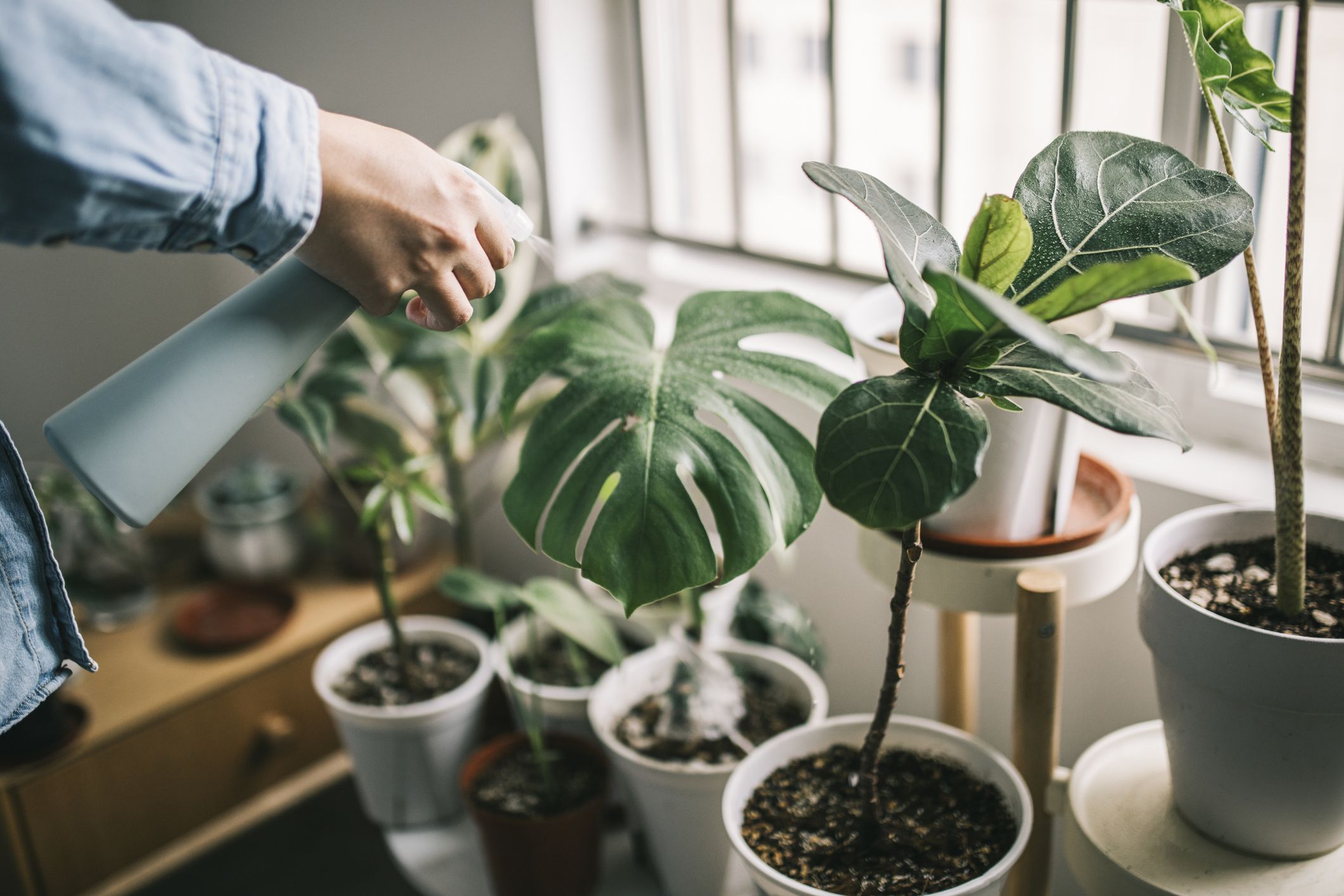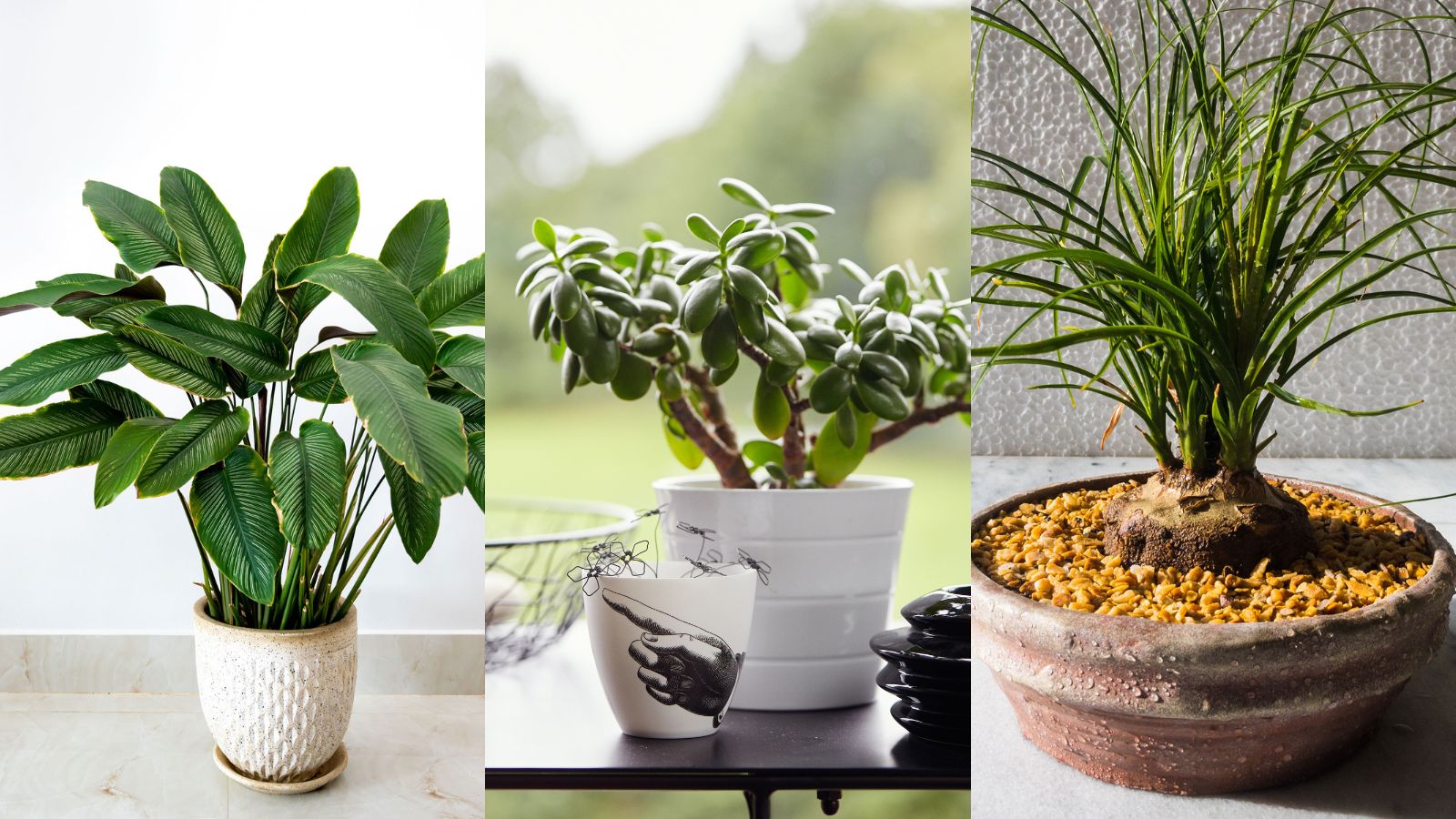
×

If you have a place in your home or office that doesn't get much sunlight, don't worry! There are still indoor plants that can grow well in low light conditions. These plants not only bring a touch of nature indoors but also help clean the air and create a peaceful atmosphere.
Snake Plant: This plant has tall, sturdy leaves that can come in different shades of green and yellow. It is considered as one of the best indoor plants for low light.
Source: www.google.com
ZZ Plant: The ZZ plant has shiny, dark green leaves that give a tropical look to any space. It's perfect for low light areas and doesn't require much care.
Pothos: Pothos is a trailing plant with heart-shaped leaves that come in various colours . It's easy to grow, even in low light, and can be placed in hanging baskets or pots.
Source : www.google.com
Dracaena: Dracaena plants have vibrant leaves and come in different varieties. They can handle low light, but it's important to water them regularly.
Peace Lily: This plant has beautiful white flowers and dark green leaves. It can tolerate low light but prefers a bit more humidity. It is considered as one of the best indoor plants for low light.
Chinese Evergreen: Chinese Evergreen plants have attractive leaves with different patterns. They are great for low light environments and require minimal care.
Cast Iron Plant: True to its name, this plant is tough and can survive in low light, neglect, and changes in temperature. Its dark green leaves are sturdy and can adapt to different conditions.
:max_bytes(150000):strip_icc()/dracaena-overview-care-1902754-7-d252ea76c5074e5fa5ebc2c3b1813ede.jpg)
Source: www.google.com
Remember to consider the space you have, watering needs, and humidity levels when choosing the best indoor plants for low light. These plants can bring life and beauty to any space, even if there's not much sunlight.
Read Also:The Ultimate Guide To Planting And Maintaining A Flower Pot
The best Low light indoor plants not only add a touch of greenery to our spaces but also offer several benefits for air quality. Here are some of the advantages of having low light indoor plants in terms of improving air quality:
Oxygen Production: All plants, regardless of light requirements, release oxygen as a byproduct of photosynthesis. Having best low light indoor plants increases the oxygen levels in the room, creating a fresher and healthier environment.
Carbon Dioxide Absorption: Plants absorb carbon dioxide, a greenhouse gas that humans exhale. By having low light indoor plants, we can reduce the concentration of carbon dioxide in the room, leading to better air quality.

Source: www.google.com
Air Purification: Many low light indoor plants are known for their air-purifying qualities. They can filter out harmful toxins and pollutants present in the air, such as formaldehyde, benzene, and trichloroethylene. These toxins can be found in everyday items like furniture, carpets, and cleaning products.
Humidity Regulation: Some low light indoor plants have the ability to release moisture through a process called transpiration. This can help increase humidity levels in dry indoor environments, which is particularly beneficial during the winter months when heating systems can dry out the air.

Source: www.google.com
Stress Reduction: Research has shown that the presence of plants indoors can reduce stress levels and enhance overall well-being. Low light indoor plants can create a calming and soothing atmosphere, promoting relaxation and improving mental health.
Noise Reduction: Certain low light indoor plants have dense foliage that can help absorb and reduce noise levels, making them beneficial for creating a quieter indoor environment.
The best low light indoor plants into your living or working space can enhance air quality, create a more pleasant atmosphere, and provide a range of health benefits. Remember to choose plants that are suitable for the specific light conditions of your space and care for them properly to maximise their air-purifying potential.
While many low light indoor plants are generally safe for dogs, it's important to be cautious and aware that not all plants are pet-friendly. Some plants, even those considered low light and non-toxic to humans, can be toxic or harmful to dogs if ingested. Here are a few considerations regarding low light indoor plants and their safety for dogs:
Research Pet-Friendly Plants: Before bringing any new plant into your home, especially if you have a dog, it's essential to research its toxicity level. Look for lists of pet-friendly plants or consult with your veterinarian to ensure the plant is safe for your dog.

Source: www.google.com
Common Toxic Plants: While not an exhaustive list, some common houseplants that are toxic to dogs include certain varieties of lilies, pothos, philodendron, snake plants, and peace lilies. These plants, if ingested, can cause digestive issues, irritation, or more severe symptoms in dogs.
Placement and Accessibility: Consider the placement of your low light indoor plants. Keep them out of your dog's reach, especially if you have a curious or mischievous pup who may be inclined to chew on plants. Use elevated plant stands or hanging baskets to prevent easy access.
Monitor Your Dog: Even if you have pet-friendly plants, it's still important to monitor your dog's behaviour around them. Some dogs may exhibit a tendency to chew or nibble on plants out of curiosity or boredom, so observe their interactions and intervene if necessary.
Source: www.google.com
Consult a Veterinarian: If you suspect that your dog has ingested a plant and is showing signs of illness or discomfort, contact your veterinarian immediately. They can provide guidance and advise on any necessary actions based on the specific plant and your dog's symptoms.
By taking precautions, selecting pet-friendly plants, and ensuring proper placement, you can create a safe environment for your dog while enjoying the benefits of best low light indoor plants. Always prioritise your dog's well-being and consult a veterinarian if you have any concerns or questions about specific plants and their safety.
By : Chetali Pandey
.